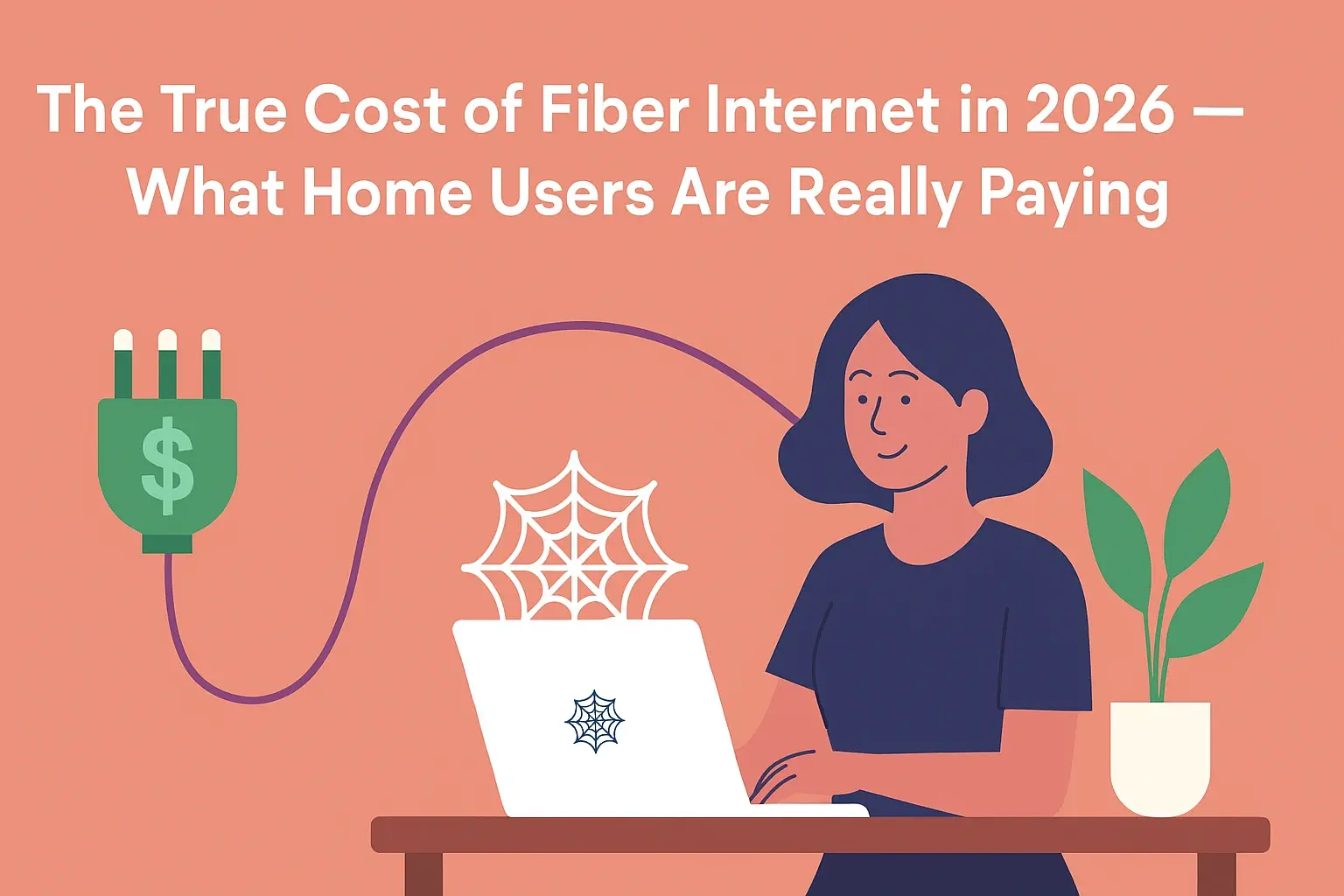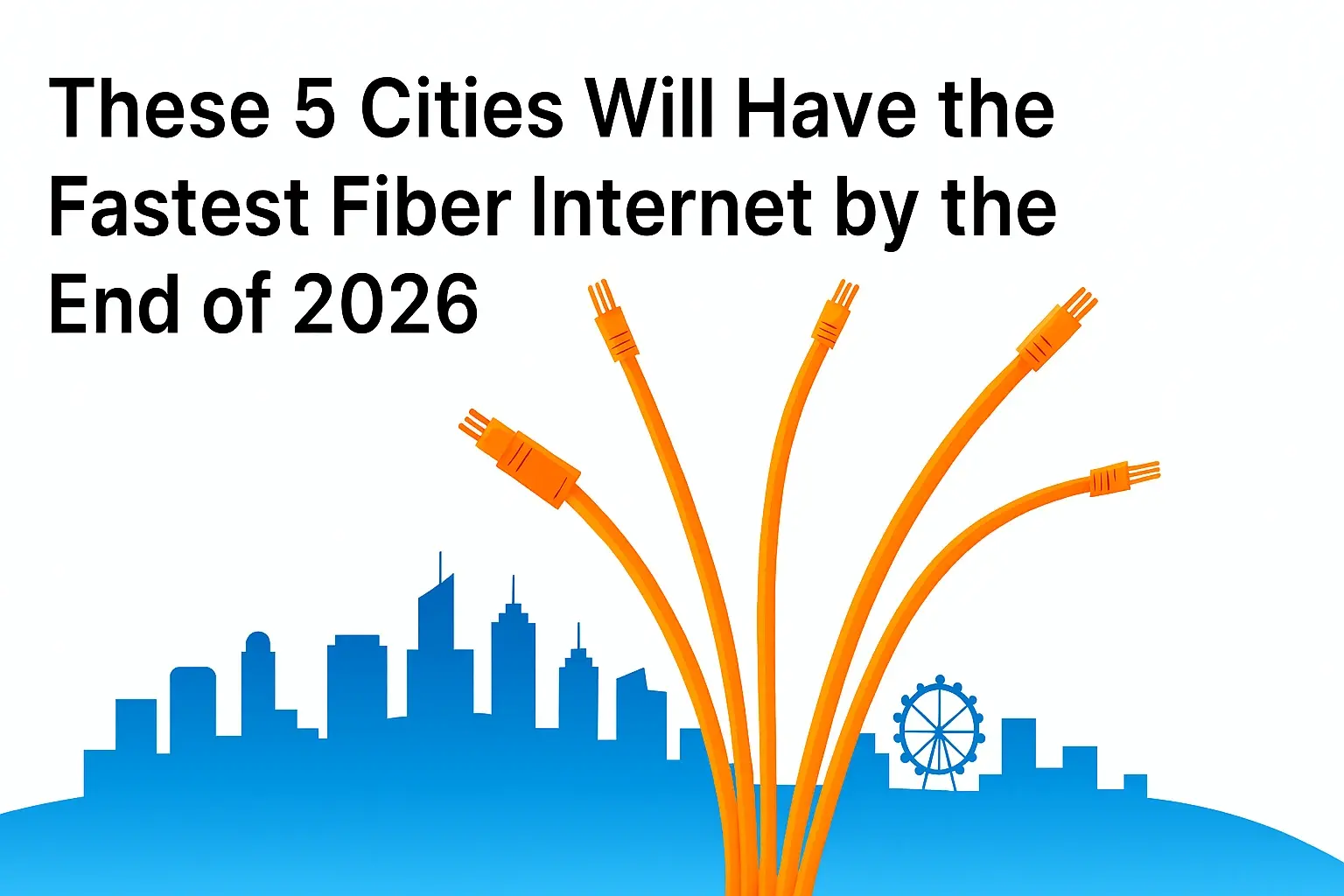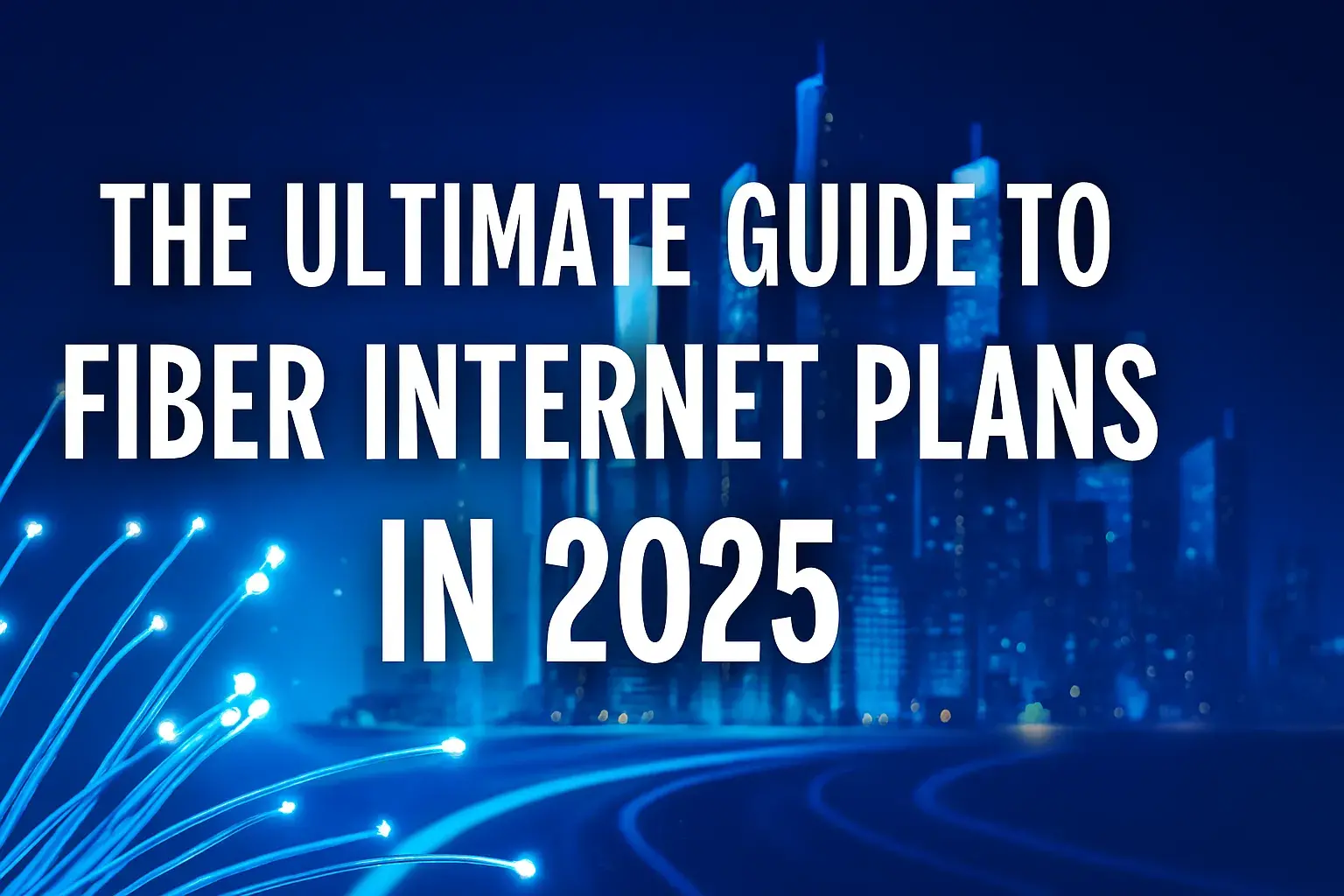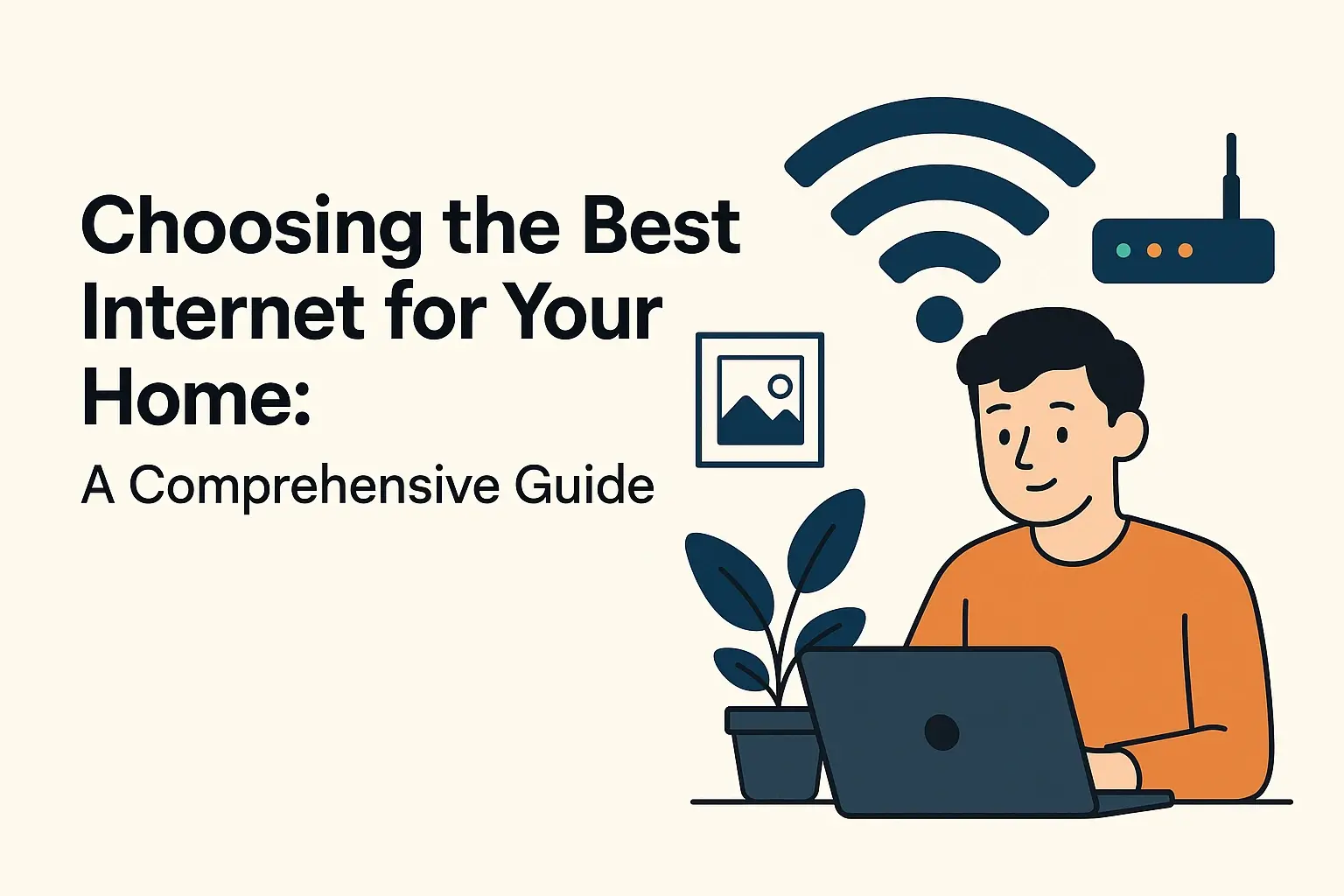Supercharge Your Business with Fiber Internet

Unlock unparalleled speed and reliability for your business operations. Discover how upgrading to fiber internet can revolutionize your connectivity, boost productivity, and drive significant growth in today's competitive digital landscape.
What is Fiber Internet and Why Does It Matter for Businesses?
In the fast-paced digital economy of 2025, a business's ability to connect, communicate, and innovate hinges on its internet infrastructure. Traditional copper-based internet technologies, while once sufficient, are increasingly showing their limitations. Fiber optic internet, on the other hand, represents a paradigm shift in connectivity. Unlike older technologies that transmit data as electrical signals over copper wires, fiber optic internet uses thin strands of glass or plastic to transmit data as pulses of light. This fundamental difference unlocks speeds, reliability, and capacity that are simply unattainable with legacy systems. For businesses, this translates directly into enhanced operational efficiency, improved customer experiences, and a stronger competitive edge. Understanding what fiber internet is and why it's becoming indispensable is the first step toward supercharging your business's potential.
The core of fiber optic technology lies in its ability to transmit data at the speed of light. This is achieved through the use of light signals that travel through optical fibers. These fibers are incredibly thin, often thinner than a human hair, and are made of highly pure glass or plastic. When data is sent through a fiber optic cable, it's converted into light pulses. These light pulses travel along the fiber, bouncing off the inner walls due to a principle called total internal reflection. This process allows data to travel vast distances with minimal signal degradation and at incredibly high speeds. The sheer bandwidth capacity of fiber is also a critical differentiator. It can carry significantly more data simultaneously compared to copper cables, making it ideal for businesses that rely heavily on cloud services, video conferencing, large file transfers, and real-time data applications.
The implications for businesses are profound. Imagine a scenario where your entire team can participate in a high-definition video conference without any lag or dropped calls, where large design files are uploaded and downloaded in seconds, and where customer support interactions are instantaneous and seamless. This is the reality that fiber internet makes possible. It's not just about faster downloads; it's about enabling a more dynamic, responsive, and efficient business environment. In 2025, where remote work, advanced analytics, and AI-driven operations are becoming mainstream, a robust internet connection is no longer a luxury but a fundamental necessity for survival and growth.
Fiber Internet vs. Traditional Connections: A Performance Showdown (2025 Edition)
To truly appreciate the transformative power of fiber internet, it's essential to compare its performance against traditional connection types. As of 2025, the gap in capabilities has widened significantly, making the choice increasingly clear for forward-thinking businesses.
DSL (Digital Subscriber Line)
DSL technology utilizes existing copper telephone lines to transmit data. While it was an improvement over dial-up, its limitations are starkly apparent in today's data-intensive environment.
- Speed: Typically ranges from 5 Mbps to 100 Mbps download, with much slower upload speeds. This is often insufficient for multiple users or demanding applications.
- Reliability: Prone to interference from electrical devices and distance from the central office can significantly degrade performance.
- Latency: Higher latency compared to fiber, leading to delays in real-time applications.
- Bandwidth: Limited capacity, easily congested during peak usage times.
Cable Internet
Cable internet uses the same coaxial cables that deliver cable television. It offers better speeds than DSL but still relies on shared infrastructure.
- Speed: Download speeds can range from 100 Mbps to over 1 Gbps, but upload speeds are often significantly lower.
- Reliability: Performance can fluctuate based on neighborhood usage, as bandwidth is shared among users in a given area.
- Latency: Generally better than DSL but still higher than fiber.
- Bandwidth: Shared bandwidth can lead to slowdowns during peak hours, impacting business operations.
Fiber Optic Internet
Fiber optic internet transmits data as light signals through glass or plastic strands, offering unparalleled performance.
- Speed: Symmetric speeds are common, with download and upload speeds often reaching 1 Gbps or even 10 Gbps. This is crucial for businesses that upload as much data as they download.
- Reliability: Highly resistant to electromagnetic interference and environmental factors, ensuring consistent performance.
- Latency: Extremely low latency, essential for real-time applications, VoIP, and online gaming/trading.
- Bandwidth: Vast, virtually unlimited bandwidth capacity, unaffected by the number of users or simultaneous applications.
The following table summarizes the key differences:
| Feature | DSL | Cable Internet | Fiber Optic Internet |
|---|---|---|---|
| Typical Download Speed (2025) | 5 - 100 Mbps | 100 Mbps - 1 Gbps+ | 1 Gbps - 10 Gbps+ |
| Typical Upload Speed (2025) | 1 - 10 Mbps | 10 Mbps - 100 Mbps | 1 Gbps - 10 Gbps+ |
| Symmetric Speeds | Rarely | Less Common | Very Common |
| Reliability | Low to Medium | Medium | High |
| Latency | High | Medium | Very Low |
| Bandwidth Capacity | Low | Medium (Shared) | Very High (Dedicated) |
| Interference Susceptibility | High | Medium | Very Low |
The data clearly shows that for any business serious about performance and future-proofing, fiber optic internet is the superior choice in 2025. The investment in higher speeds, consistent reliability, and vast bandwidth pays dividends in productivity and operational efficiency.
The Pillars of Supercharged Business: Key Benefits of Fiber Internet
Supercharging your business with fiber internet isn't just about having a faster connection; it's about unlocking a suite of benefits that directly impact your bottom line and operational agility. In 2025, these benefits are more critical than ever.
Unprecedented Speed and Bandwidth
The most obvious advantage of fiber is its sheer speed. With download and upload speeds that can reach gigabits per second, fiber eliminates bottlenecks that plague traditional connections. This means:
- Rapid Data Transfers: Large files, design assets, video projects, and database backups can be transferred in seconds, not minutes or hours.
- Seamless Cloud Operations: Accessing and utilizing cloud-based applications, storage, and services becomes as smooth as if they were on a local server.
- High-Quality Video Conferencing: Crystal-clear, lag-free video calls with multiple participants become the norm, enhancing collaboration and remote work effectiveness.
- Real-time Data Processing: Businesses relying on IoT devices, AI analytics, or live data feeds can process information instantaneously, enabling faster decision-making.
Enhanced Reliability and Uptime
Downtime is costly. Fiber optic cables are far more reliable than copper wires:
- Immunity to Interference: Unlike copper, fiber is not susceptible to electromagnetic interference (EMI) from machinery, power lines, or even weather conditions like lightning.
- Durability: Fiber cables are more resistant to corrosion and physical damage, leading to fewer service interruptions.
- Consistent Performance: Businesses experience stable speeds and performance regardless of network congestion or distance from the provider's hub. This translates to predictable operations.
- Reduced IT Support Costs: Fewer service issues mean less time and money spent on troubleshooting and repairs.
Improved Scalability
As your business grows, your connectivity needs will evolve. Fiber infrastructure is inherently scalable:
- Easy Upgrades: Increasing bandwidth is often as simple as upgrading the equipment at either end of the fiber, rather than replacing the entire cable infrastructure.
- Future-Proofing: Fiber is designed to handle future technological advancements and increasing data demands for years to come.
- Support for New Technologies: Fiber can easily support the bandwidth requirements of emerging technologies like 5G private networks, advanced VR/AR applications, and sophisticated AI systems.
Lower Latency
Latency, the delay in data transmission, is critical for real-time applications:
- Superior VoIP and Communication: Crystal-clear voice calls with no delays, improving customer service and internal communication.
- Responsive Online Applications: Faster interactions with web-based CRM, ERP, and other business software.
- Efficient Remote Access: Seamless access to company resources for remote employees, mimicking the experience of being in the office.
Cost-Effectiveness in the Long Run
While the initial installation cost might be higher, fiber often proves more cost-effective over time:
- Reduced Downtime Costs: The significant reduction in downtime translates directly to saved revenue and productivity.
- Lower Maintenance: Fiber optic cables require less maintenance than copper.
- Increased Productivity: The speed and reliability boost employee productivity, leading to higher output and efficiency.
- Support for More Services: A single fiber connection can often support multiple services (internet, phone, video), potentially consolidating costs.
Consider a marketing agency in 2025 that relies heavily on transferring large video files and collaborating with clients via high-resolution video conferencing. With DSL, these tasks would be a constant source of frustration and delays. With fiber, these operations become fluid and efficient, allowing the agency to take on more projects and deliver faster results, directly impacting their revenue and client satisfaction.
Transforming Daily Operations: How Fiber Internet Enhances Workflow
The tangible impact of fiber internet extends to every facet of daily business operations. By removing connectivity limitations, businesses can optimize workflows, improve collaboration, and elevate customer experiences. Let's explore specific areas:
Enhanced Collaboration and Communication
In 2025, hybrid and remote work models are standard. Fiber internet is the backbone of effective distributed teams:
- Flawless Video Conferencing: High-definition, stable video calls with screen sharing allow teams to collaborate as if they were in the same room, fostering better understanding and engagement. Platforms like Zoom, Microsoft Teams, and Google Meet perform at their peak.
- Instantaneous Messaging and File Sharing: Internal communication tools and file-sharing services operate with near-zero delay, ensuring quick dissemination of information and documents.
- Real-time Document Co-editing: Collaborative platforms like Google Workspace and Microsoft 365 allow multiple users to edit documents simultaneously without conflicts or lag, boosting project efficiency.
Streamlined Cloud Service Utilization
Most modern businesses leverage cloud services for everything from CRM and accounting to data storage and software applications. Fiber internet ensures these services are as responsive as on-premise solutions:
- Faster Cloud Application Performance: Accessing and interacting with SaaS applications is significantly faster, reducing user frustration and improving task completion times.
- Efficient Cloud Backups and Data Recovery: Large backups can be performed quickly and efficiently, ensuring business continuity. Data recovery processes are also expedited.
- Seamless Integration of Cloud Tools: Integrating various cloud-based tools and services becomes simpler and more reliable, allowing for a more cohesive tech stack.
Improved Customer Service and Support
Customer satisfaction is paramount. Fiber internet directly contributes to a better customer experience:
- Faster Website Loading Times: A slow website can deter customers. Fiber ensures your site loads quickly, improving user experience and potentially conversion rates.
- Responsive Customer Support Channels: Whether it's live chat, VoIP calls, or video support, fiber ensures these channels are always available and performant, leading to quicker issue resolution and happier customers.
- Real-time Data Access for Support Agents: Support staff can access customer history and relevant data instantly, enabling personalized and efficient service.
Accelerated Data Analysis and Business Intelligence
Data-driven decision-making is crucial. Fiber internet enables faster and more effective data analysis:
- Quick Data Ingestion: Businesses can collect and ingest large volumes of data from various sources (IoT devices, sales platforms, website analytics) at high speeds.
- Faster Report Generation: Business intelligence tools can process data and generate reports much faster, providing insights when they are most relevant.
- Real-time Dashboards: Live data dashboards provide up-to-the-minute insights into business performance, allowing for agile adjustments.
Support for Advanced Technologies
As businesses adopt cutting-edge technologies, the demand for bandwidth increases exponentially. Fiber is the only practical solution:
- IoT Deployments: The proliferation of Internet of Things (IoT) devices generates massive amounts of data that require high-speed, low-latency connectivity for real-time monitoring and control.
- AI and Machine Learning: Training and deploying AI models, especially those involving large datasets, requires substantial bandwidth and speed.
- Augmented Reality (AR) and Virtual Reality (VR): Immersive AR/VR applications for training, design, or customer engagement demand extremely high bandwidth and ultra-low latency, which only fiber can reliably provide.
For example, a retail business in 2025 utilizing an AI-powered inventory management system that constantly analyzes sales data from numerous store locations and online channels would find its operations severely hampered by anything less than fiber. With fiber, the system can ingest data in real-time, predict stockouts with greater accuracy, and optimize ordering, leading to reduced waste and increased sales. This is a direct operational enhancement driven by superior connectivity.
Navigating the Options: Choosing the Right Fiber Internet Plan for Your Business
Selecting the correct fiber internet plan is crucial to maximizing its benefits without overpaying. The key is to assess your business's current and future needs accurately. Here’s a guide to help you navigate the choices available in 2025:
Assess Your Bandwidth Requirements
This is the most critical step. Consider:
- Number of Users: How many employees will be simultaneously connected and actively using the internet?
- Types of Applications: Are you primarily using email and web browsing, or are you heavily reliant on video conferencing, large file transfers, cloud services, VoIP, and streaming?
- Peak Usage Times: When is your network most heavily utilized?
- Upload vs. Download Needs: Many businesses underestimate their upload speed requirements. If you frequently send large files, use cloud backup services, or host video calls, symmetric speeds (equal upload and download) are essential.
- Future Growth: Anticipate your business expansion and technology adoption plans over the next 2-3 years.
Understand Speed Tiers
Fiber providers typically offer various speed tiers. Common offerings in 2025 include:
- Symmetric 100 Mbps to 500 Mbps: Suitable for small businesses with moderate internet usage, typically up to 10-20 users, primarily for browsing, email, and standard video conferencing.
- Symmetric 1 Gbps: The sweet spot for many small to medium-sized businesses (SMBs). This tier can comfortably support 20-50 users, heavy cloud usage, multiple high-definition video conferences, and large file transfers.
- Symmetric 10 Gbps and Higher: For larger enterprises, data-intensive industries (e.g., media production, software development, financial trading), or businesses with very high numbers of users and demanding real-time applications.
Consider Service Level Agreements (SLAs)
For businesses where uptime is critical, look for providers offering robust Service Level Agreements (SLAs). An SLA is a contract that guarantees a certain level of performance and uptime. Key aspects to check include:
- Uptime Guarantee: Typically expressed as a percentage (e.g., 99.9%, 99.99%). A higher percentage means less expected downtime.
- Response Time: How quickly will the provider respond to a service issue?
- Resolution Time: What is the guaranteed time to fix a problem?
- Service Credits: What compensation will you receive if the provider fails to meet the SLA guarantees?
Businesses with mission-critical operations, such as financial institutions or healthcare providers, will find SLAs invaluable.
Evaluate Provider Reputation and Support
Speed and bandwidth are important, but so is the quality of the provider and their customer support:
- Local Availability: Fiber deployment is still expanding. Check which providers offer fiber service in your specific business location.
- Customer Reviews: Research online reviews and testimonials regarding the provider's installation process, reliability, and customer service responsiveness.
- Technical Support: Does the provider offer 24/7 business support? What are their support channels (phone, chat, email)?
Compare Pricing and Contract Terms
Fiber plans can vary significantly in price. Always compare:
- Monthly Cost: Understand what is included in the monthly fee.
- Installation Fees: These can sometimes be substantial, especially for custom installations.
- Contract Length: Most business plans require a contract (e.g., 1-3 years). Understand the terms and any early termination fees.
- Equipment Costs: Is a modem or router included, or is it an additional rental or purchase cost?
Example Scenario: A Small Design Studio (2025)
A design studio with 15 employees, regularly transferring large graphic design files (often 1-2 GB each) to clients and using cloud-based project management tools and high-definition video calls for client meetings. They need reliable, fast upload speeds. A symmetric 1 Gbps fiber plan would be ideal. This provides ample bandwidth for all users, fast uploads for file transfers, and smooth, uninterrupted video conferencing. While a 500 Mbps plan might suffice for daily tasks, the 1 Gbps plan offers the headroom for peak usage and future growth without immediate concern.
By carefully considering these factors, businesses can select a fiber internet plan that not only meets their current needs but also supports their strategic objectives for the future, truly supercharging their operations.
Smooth Transition: A Strategic Guide to Implementing Fiber Internet
Upgrading to fiber internet is a strategic move, and a well-planned implementation ensures a smooth transition with minimal disruption to your business operations. Here’s a step-by-step approach for 2025:
Step 1: Assessment and Planning
- Define Needs: As discussed in the previous section, thoroughly assess your business's current and future bandwidth, speed, and reliability requirements.
- Site Survey: If you are considering a new installation or moving to a new location, work with potential providers to conduct a site survey. This will determine the feasibility of fiber deployment to your premises and identify any potential challenges.
- Budget Allocation: Determine your budget for installation costs, monthly service fees, and any necessary new equipment.
- Timeline: Establish a realistic timeline for the entire process, from vendor selection to final cutover.
Step 2: Vendor Selection
- Request Proposals (RFPs): Contact multiple fiber providers serving your area and request detailed proposals based on your assessed needs.
- Compare Offers: Evaluate proposals based on speed, reliability (SLA), contract terms, pricing, customer support, and installation timelines.
- Check References: Ask for references from businesses of similar size and industry that have used the provider's services.
- Negotiate Terms: Don't hesitate to negotiate pricing, contract length, and specific service clauses.
Step 3: Pre-Installation Preparation
- Internal Network Audit: Assess your existing network infrastructure (routers, switches, Wi-Fi access points, cabling). Ensure your internal network can support the speeds of the new fiber connection. You may need to upgrade your equipment to avoid creating a new bottleneck.
- Wiring and Cabling: If new internal wiring is required to distribute the fiber connection throughout your office, plan and execute this work. This might involve running new Ethernet cables or ensuring existing Cat6/Cat6a cabling is in good condition.
- Equipment Procurement: Purchase or rent any necessary networking equipment (e.g., higher-capacity routers, managed switches) that will be compatible with your new fiber service.
- Employee Communication: Inform your staff about the upcoming upgrade, the expected benefits, and any temporary disruptions during the installation or cutover process.
Step 4: Installation and Configuration
- Provider Installation: The fiber provider will install the fiber optic cable to your premises and set up their termination equipment (e.g., Optical Network Terminal - ONT).
- Internal Network Connection: Connect your network's core router to the provider's equipment.
- Configuration: Configure your network devices (firewalls, routers, Wi-Fi) to utilize the new fiber connection. This is often done in conjunction with the provider's technical team.
- Testing: Thoroughly test the connection speed, reliability, and latency. Verify that all critical business applications and services are functioning correctly.
Step 5: Cutover and Post-Installation
- Phased Cutover (Recommended): If possible, implement a phased cutover. This might involve directing a portion of your traffic to the new fiber connection first, then gradually migrating all traffic once you are confident in its performance.
- Parallel Operations: For critical periods, you might run both your old and new connections in parallel for a short time, ensuring a seamless switch.
- Decommission Old Service: Once you are fully satisfied with the fiber service, formally cancel your old internet connection to avoid ongoing charges.
- Monitor Performance: Continuously monitor your network performance and uptime after the cutover.
- Train Staff: Provide any necessary training to staff on new procedures or tools that might be enabled by the faster connection.
- Review and Optimize: Periodically review your internet usage and costs to ensure your plan still aligns with your business needs and explore any available optimization opportunities.
Example: A Growing E-commerce Business (2025)
An e-commerce business is experiencing rapid growth and their current cable internet is struggling to keep up with increased website traffic, order processing, and customer support demands. They decide to upgrade to fiber. They conduct a thorough needs assessment, identifying the need for symmetric 1 Gbps speeds to handle peak traffic and large data uploads for product catalog updates. They receive proposals from three local fiber providers, comparing SLAs for 99.99% uptime. After selecting a provider, they audit their internal network, realizing their existing firewall is a bottleneck and order a new, higher-capacity firewall. They schedule the installation during a less busy period (e.g., a weekend or overnight) to minimize disruption, ensuring their website and order systems are fully tested before directing all traffic to the new fiber line.
A meticulous implementation strategy is key to realizing the full potential of fiber internet without operational hiccups.
Future-Proofing Your Business: The Long-Term Advantages of Fiber
Investing in fiber optic internet is not just about solving today's connectivity challenges; it's a strategic decision that positions your business for sustained success in the years to come. In the rapidly evolving digital landscape of 2025 and beyond, future-proofing your infrastructure is paramount. Fiber provides the foundational elements necessary to adapt and thrive.
Capacity for Emerging Technologies
The pace of technological innovation is relentless. Businesses that are agile and can readily adopt new tools will gain a competitive advantage. Fiber internet provides the necessary bandwidth and low latency to support:
- Advanced AI and Machine Learning: As AI becomes more integrated into business processes, the demand for processing and transmitting vast datasets will only increase. Fiber is essential for training complex models and deploying real-time AI applications.
- Edge Computing: Processing data closer to the source reduces latency and improves efficiency. Fiber networks are critical for enabling robust edge computing solutions.
- Extended Reality (XR) – AR/VR/MR: Immersive technologies are moving beyond entertainment into business applications like training, design visualization, remote assistance, and virtual collaboration. These applications are incredibly data-intensive and latency-sensitive, requiring fiber.
- Internet of Things (IoT) at Scale: The number of connected devices is exploding. Managing and processing the data from thousands or millions of IoT sensors requires a network with massive capacity and speed, which fiber provides.
Resilience in a Dynamic Market
The business environment is increasingly unpredictable. Disruptions can come from economic shifts, new competitors, or unforeseen global events. A robust and reliable internet connection is a key factor in maintaining operational resilience:
- Business Continuity: With its high reliability, fiber minimizes the risk of connectivity-related downtime, ensuring your business can continue operating even during adverse conditions.
- Agility and Adaptability: The ability to quickly scale bandwidth or adopt new digital tools allows businesses to pivot and adapt to changing market demands more effectively.
- Remote Work Sustainability: The widespread adoption of remote and hybrid work models is here to stay. Fiber ensures that distributed teams remain connected and productive, regardless of their location.
Enhanced Competitive Advantage
Businesses that leverage advanced technology powered by fiber internet will inevitably outperform their competitors:
- Faster Innovation Cycles: The ability to rapidly develop, test, and deploy new digital products and services accelerates innovation.
- Superior Customer Experiences: Offering faster, more responsive, and more personalized services driven by data and seamless connectivity will differentiate your brand.
- Operational Efficiencies: Streamlined processes, automated workflows, and data-driven insights lead to significant cost savings and improved profitability.
Long-Term Investment Value
While the initial investment in fiber might seem significant, its long-term benefits far outweigh the costs:
- Reduced Total Cost of Ownership: Lower maintenance, fewer disruptions, and increased productivity contribute to a lower total cost of ownership compared to less capable technologies over time.
- Increased Asset Value: A business with a modern, high-capacity fiber infrastructure is a more valuable and attractive asset, whether for sale, merger, or acquisition.
- Attracting Talent: A technologically advanced workplace with excellent connectivity is more appealing to top talent, particularly in tech-focused roles.
Consider a manufacturing firm in 2025 implementing advanced robotics and AI-driven quality control systems. These systems generate terabytes of data daily that need to be analyzed in real-time to optimize production and identify defects. Without fiber, this would be impossible. With fiber, the company can achieve unprecedented levels of automation, efficiency, and product quality, gaining a significant edge over competitors relying on older infrastructure. This investment in fiber directly translates into a stronger market position and sustained growth.
In conclusion, supercharging your business with fiber internet is an essential strategic imperative for 2025 and beyond. It's the foundation upon which innovation, efficiency, and resilience are built. By embracing fiber, you're not just upgrading your connection; you're investing in the future of your business.





